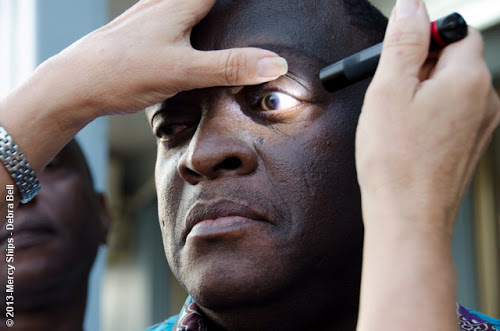Recognizing the Different Vision Adjustment Procedures Available for Clearer View
In the world of vision adjustment treatments, a multitude of alternatives exist to deal with refractive mistakes and offer people with clearer view. Let's check out the details of these procedures and dropped light on the path to attaining improved vision quality (Neurologist Andalusia).
LASIK Surgical Treatment
LASIK surgical procedure is a common refractive procedure utilized to fix vision issues such as astigmatism, farsightedness, and nearsightedness. This medical method, which stands for Laser-Assisted in Situ Keratomileusis, aims to reshape the cornea to improve how light is concentrated on the retina, inevitably enhancing vision clarity.
One of the primary advantages of LASIK surgical procedure is the fast improvement in vision experienced by patients. Several people observe a substantial improvement in their vision immediately after the treatment. In addition, the majority of individuals report very little pain and discomfort throughout the surgical treatment and recovery duration. The recuperation time for LASIK is reasonably fast, with numerous people going back to their daily activities within a day or two post-operation. In general, LASIK surgical procedure is a preferred choice for people seeking a long-term remedy for their vision troubles.
PRK Procedure

PRK is an ideal option for individuals with thin corneas or those at a greater threat of eye injuries, as it does not include developing a corneal flap. The recovery procedure for PRK is somewhat longer compared to LASIK, as the epithelium needs time to regrow. Clients might experience discomfort and blurry vision for a couple of days complying with the procedure.
Despite the longer recuperation time, PRK can produce excellent results in vision enhancement, making it a valuable option for those who may not be appropriate prospects for LASIK surgical procedure. - Eye Center Andalusia
Implantable Lenses
As opposed to PRK where the cornea is improved straight, implantable lenses supply an additional approach for remedying vision by putting synthetic lenses inside the eye. This treatment is particularly advantageous for individuals with high levels of astigmatism, nearsightedness, or farsightedness that might not be appropriate candidates for laser surgeries like LASIK or PRK.
Implantable lenses, additionally recognized as phakic intraocular lenses, job by supplementing the eye's natural lens with a synthetic one. These lenses can be placed in front of the natural lens (anterior chamber) or behind the iris and before the all-natural lens (posterior chamber) By adjusting the power and positioning of these lenses, ophthalmologists can properly deal with refractive errors and enhance aesthetic acuity.
One advantage of implantable lenses is that they are removable and exchangeable, giving versatility for future adjustments. As with any kind of surgical procedure, there are risks entailed, such as infection or cataract formation. People taking into consideration implantable lenses ought to seek advice from with an eye care specialist to figure out the most ideal option based on their specific needs and eye wellness.
Corneal Rings

The procedure for inserting corneal rings is fairly quick and minimally invasive, usually performed as an outpatient procedure. Throughout the surgical procedure, the eye doctor makes a small incision in the cornea and inserts the rings at a specific depth. Once in area, the rings aid to improve the cornea, providing a smoother surface area for light to get in the eye, which can cause more clear vision.
Corneal rings are thought about a reversible procedure, as they can be eliminated or replaced if required. While they may not completely get rid of the need for glasses or call lenses, corneal rings can considerably improve vision quality and general visual comfort for individuals with keratoconus or various other corneal abnormalities.
Refractive Lens Exchange
Adhering to the correction of corneal abnormalities with treatments like corneal rings, one more vision correction strategy that can resolve refractive mistakes is Refractive Lens Exchange (RLE) RLE is an operation that entails changing the eye's natural lens with an artificial intraocular lens (IOL) to deal with refractive mistakes such as nearsightedness, farsightedness, and presbyopia. This treatment is especially useful for individuals that may not be suitable candidates for treatments like LASIK or PRK because of factors such as slim corneas or high refractive errors.
Recuperation time for RLE is relatively quick, and people can expect enhanced vision soon after the treatment. As with any kind of surgical procedure, prospective threats and complications exist, so a thorough consultation with an eye care specialist is necessary to determine if RLE is the best vision correction option.
Final Thought

In the realm of vision modification procedures, a wide range of choices exist to address refractive errors and supply people with more clear sight.LASIK surgical procedure is an usual refractive treatment made use of to fix vision problems such as nearsightedness, farsightedness, and astigmatism.While additionally a typical refractive treatment, the PRK (Photorefractive Keratectomy) strategy differs from LASIK surgical procedure in its technique to remedying vision problems.Adhering to the correction of corneal irregularities with procedures like corneal rings, one more vision modification technique that can attend to refractive errors is Refractive his response Lens Exchange (RLE) LASIK surgical procedure, PRK treatment, implantable lenses, corneal rings, and refractive lens exchange are all alternatives that can attend to different vision problems.